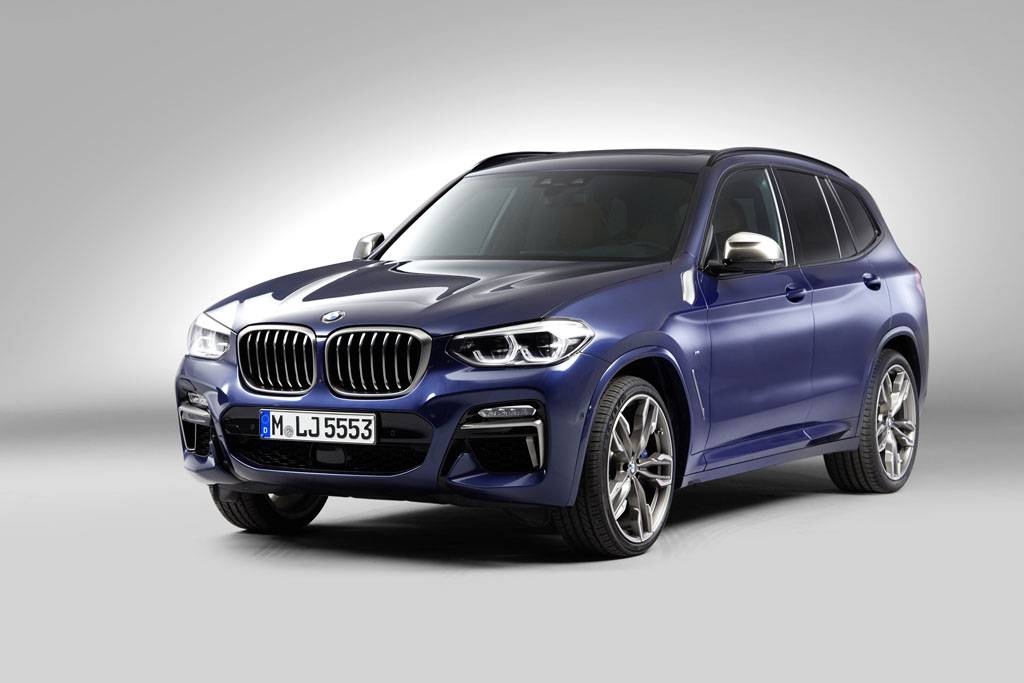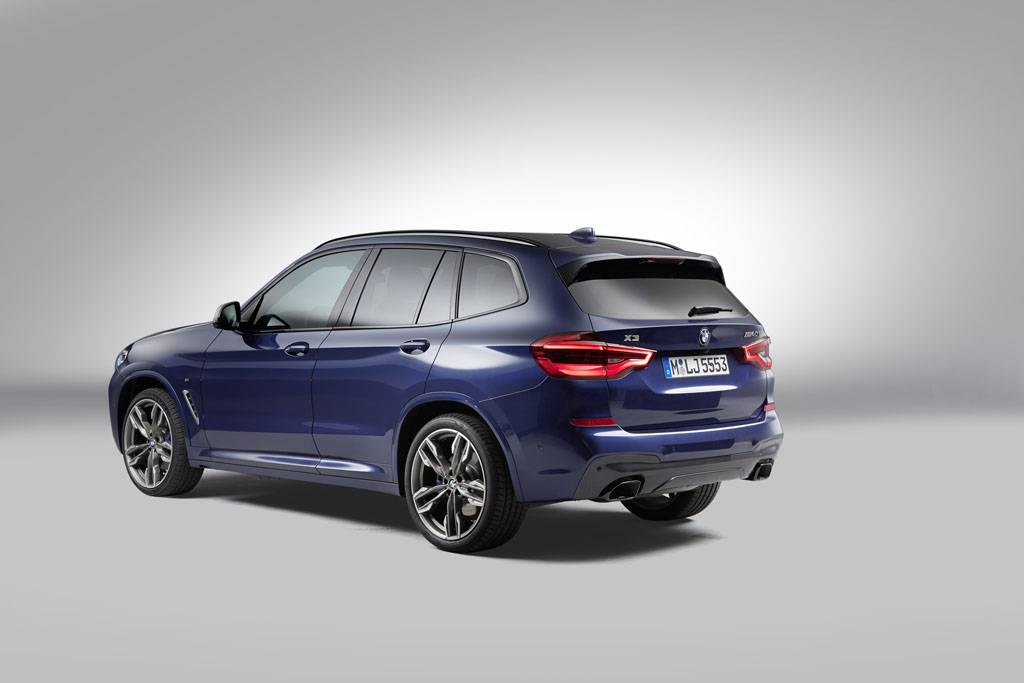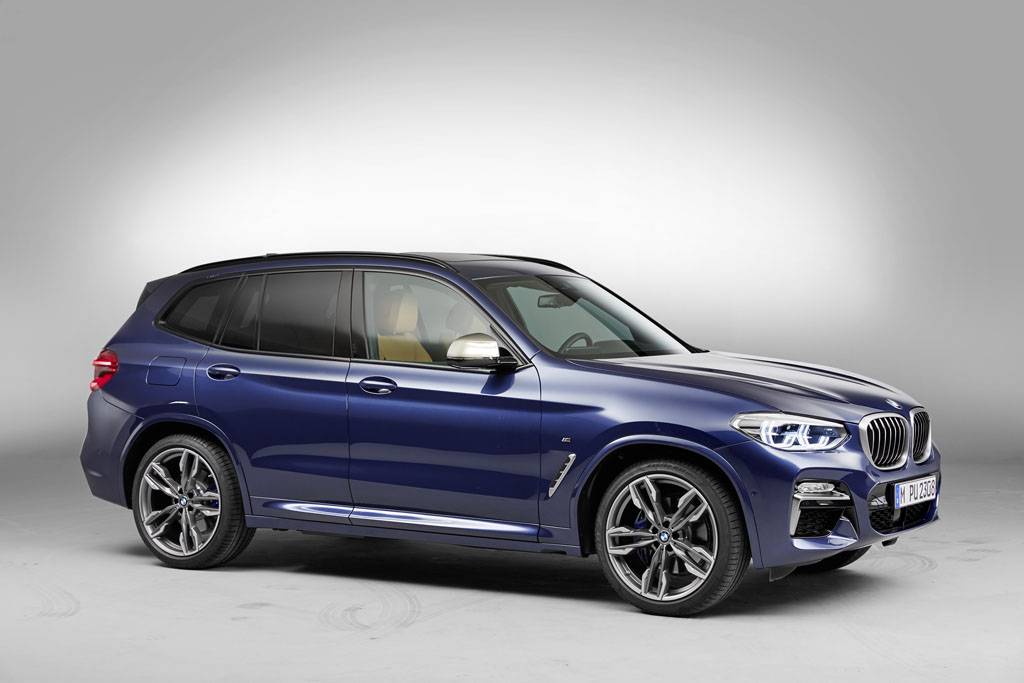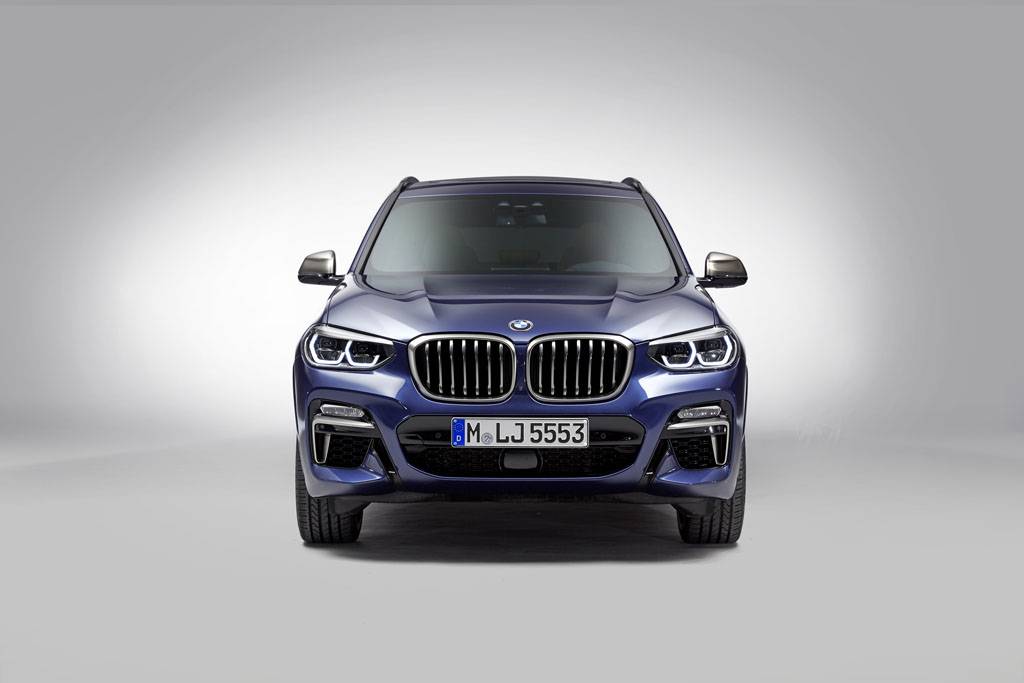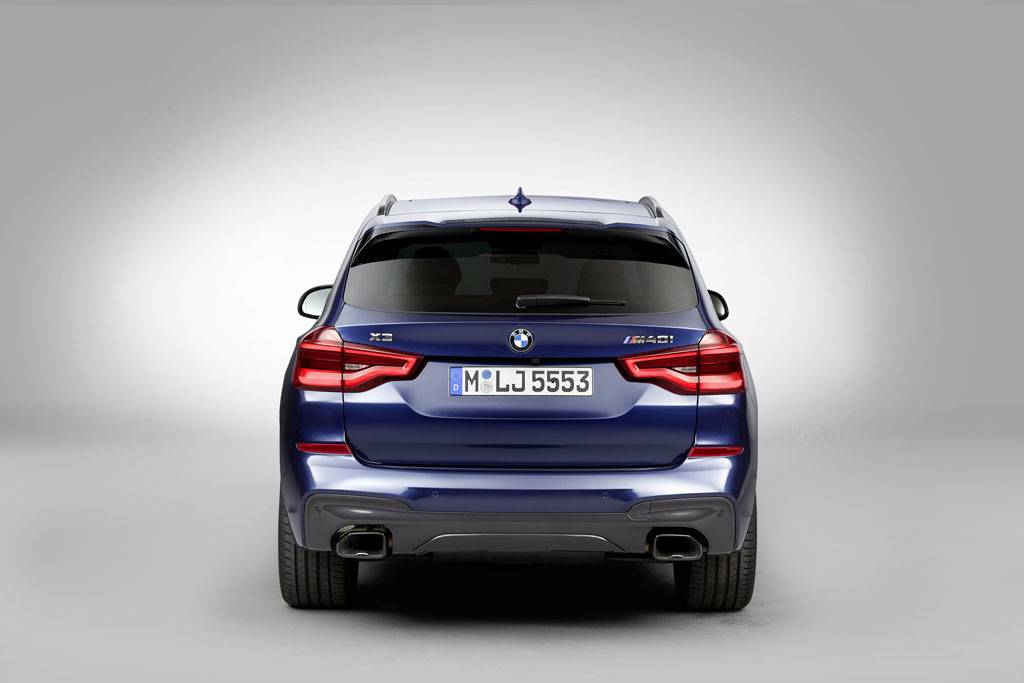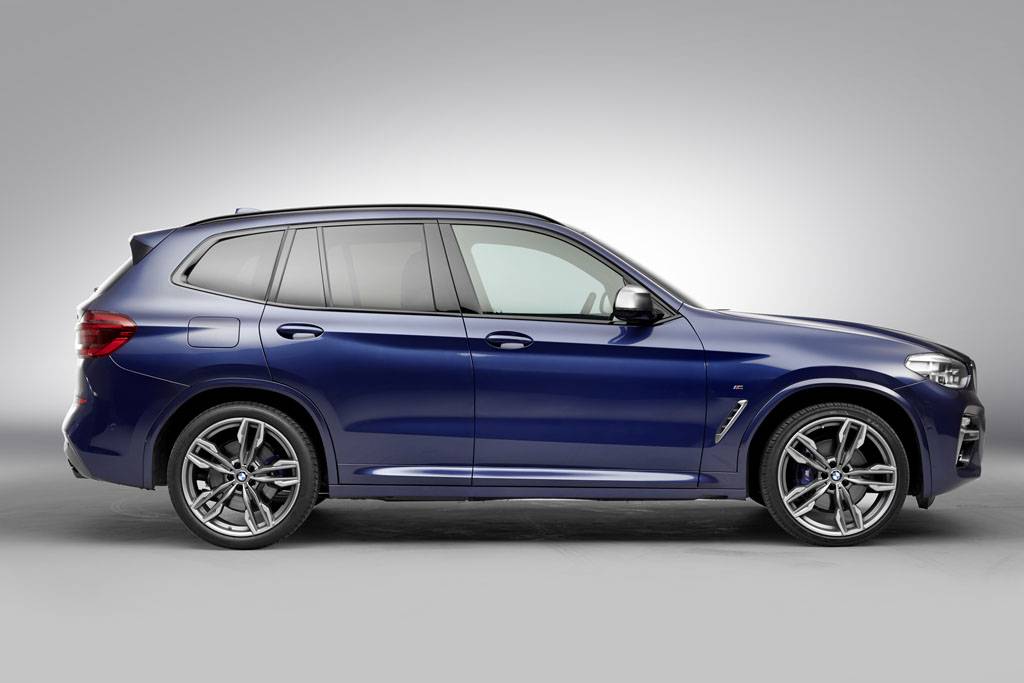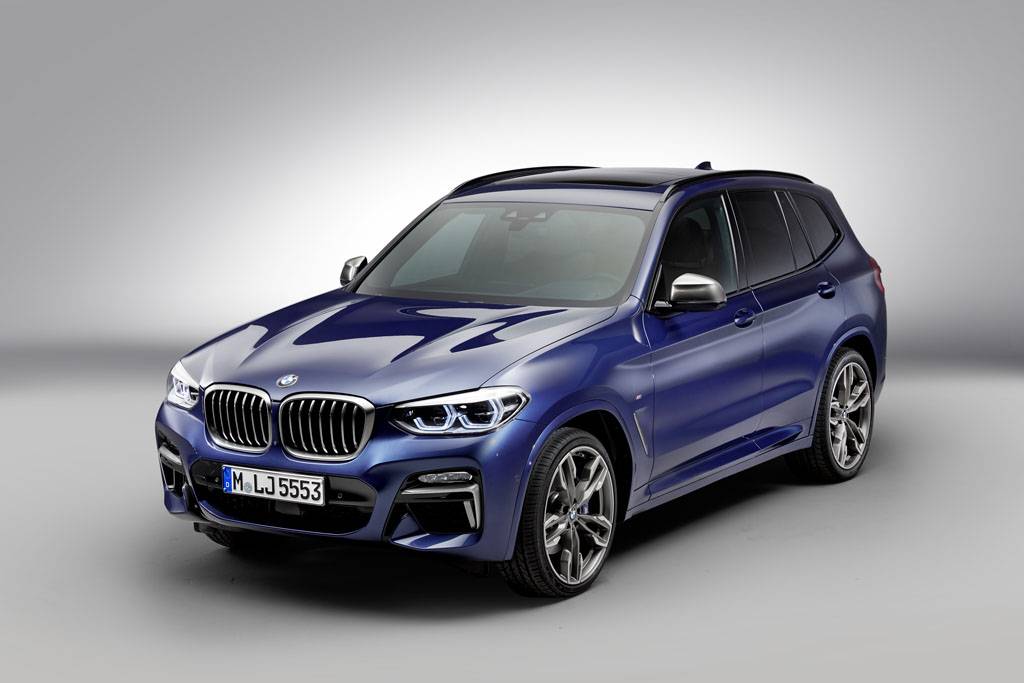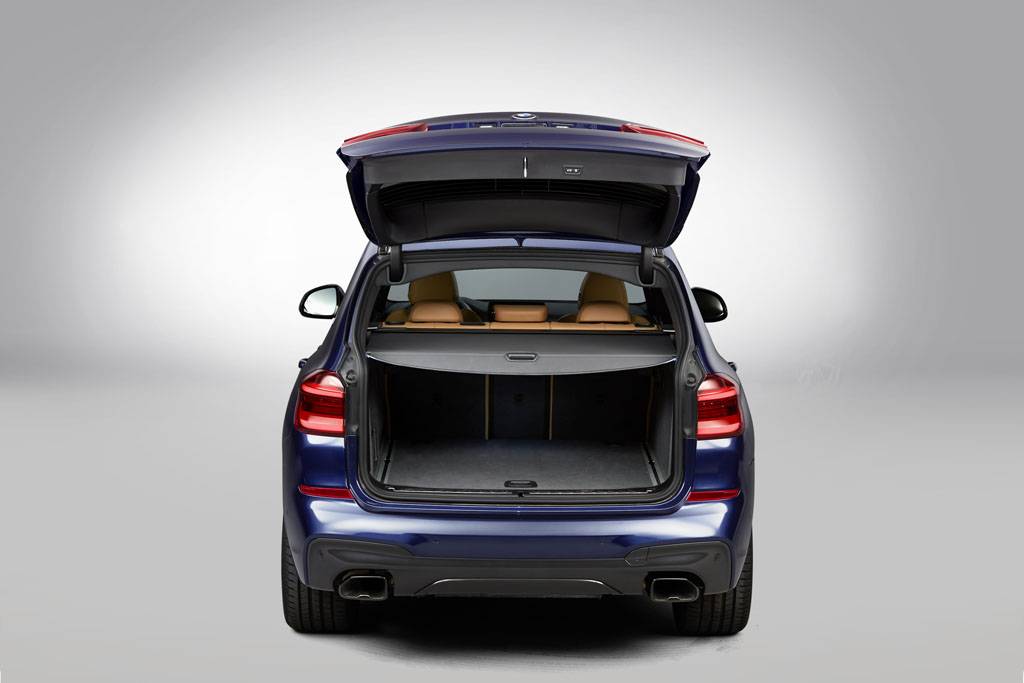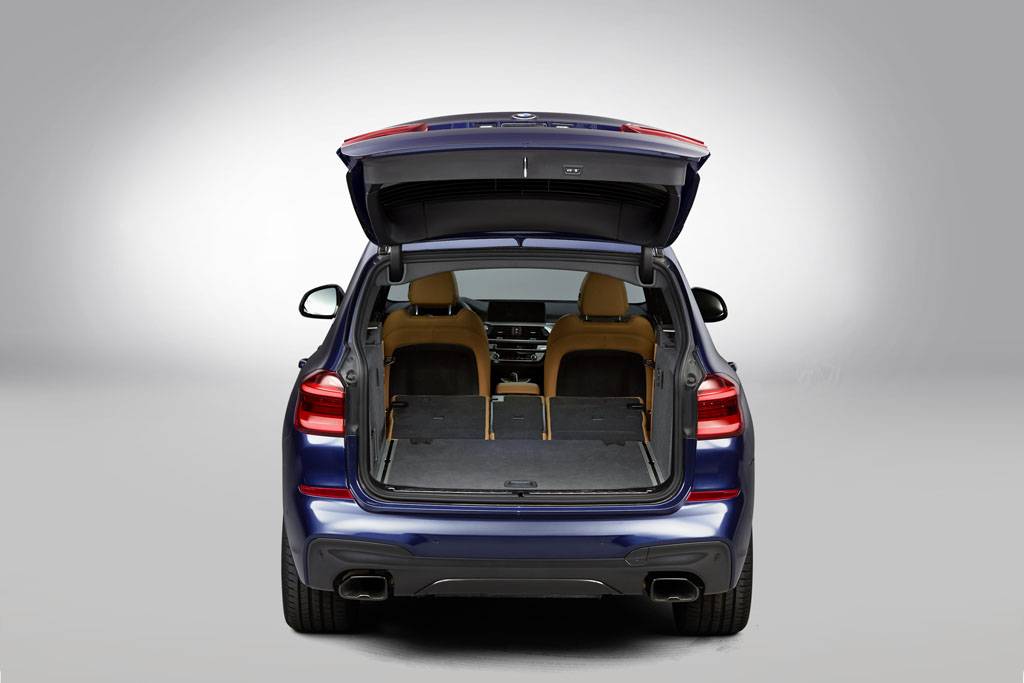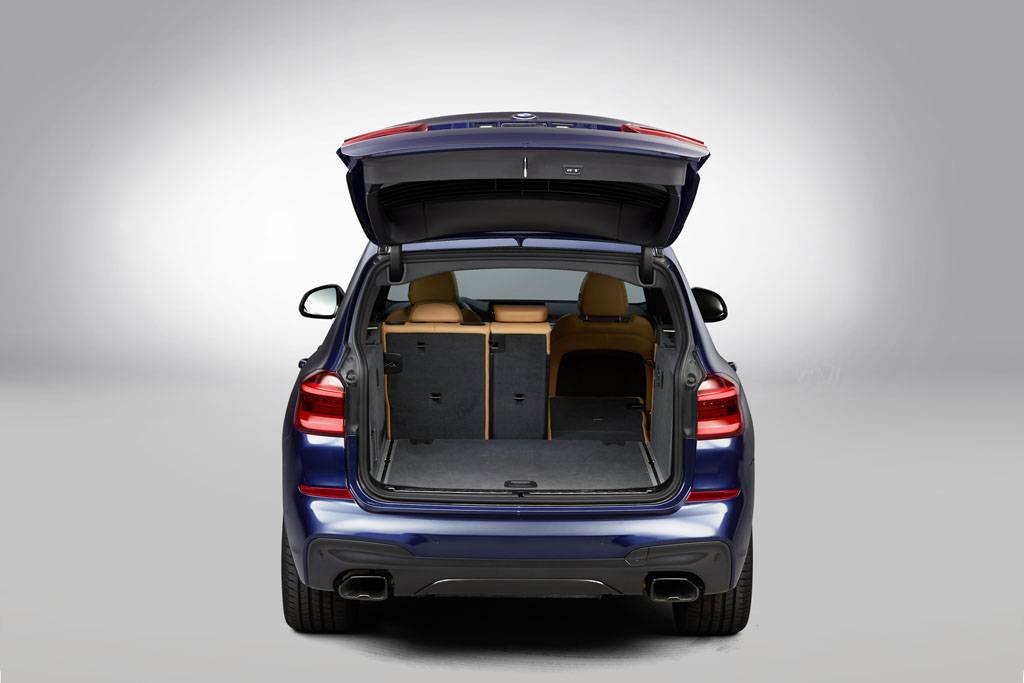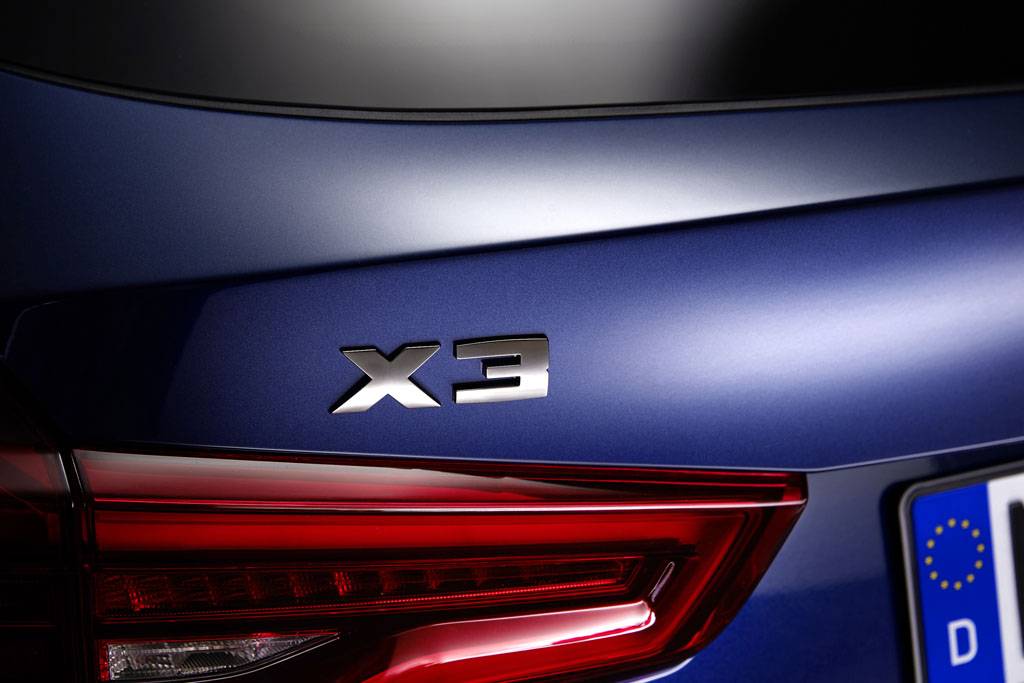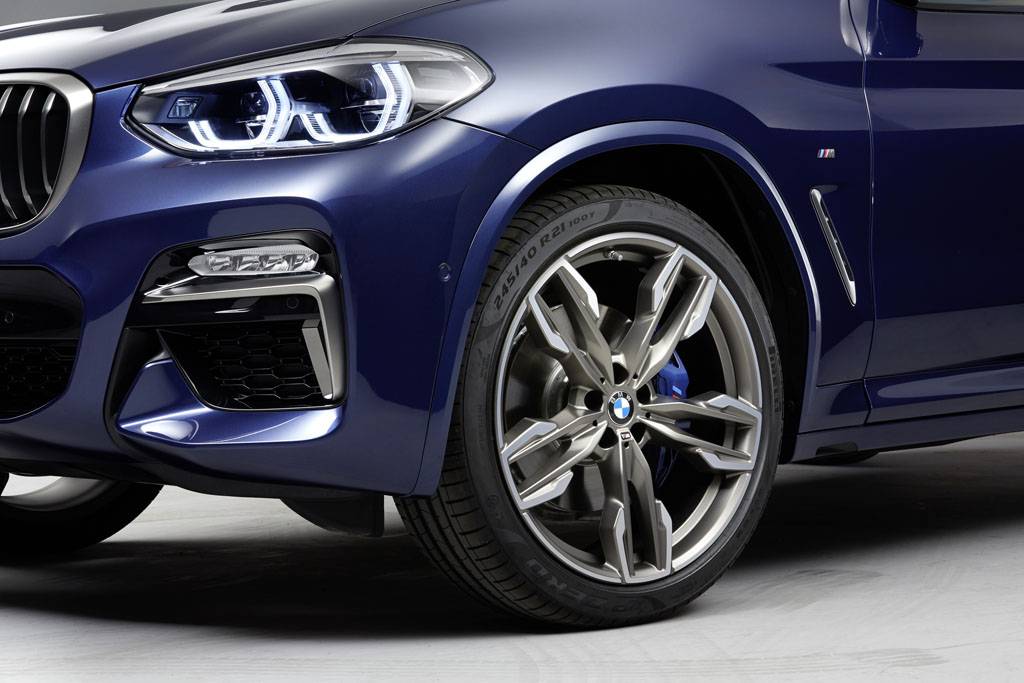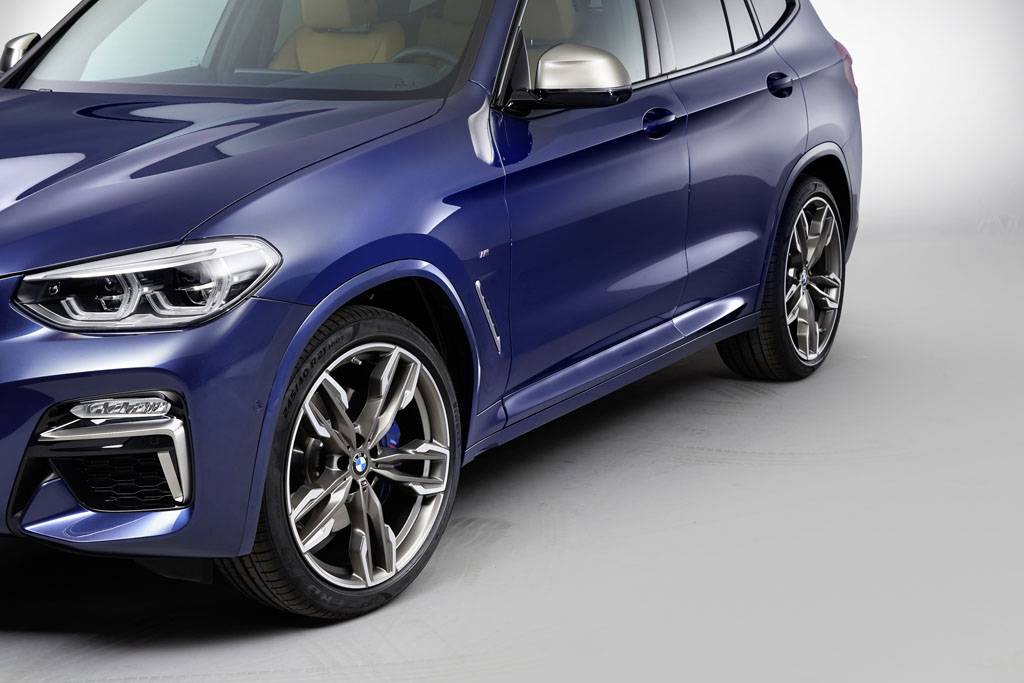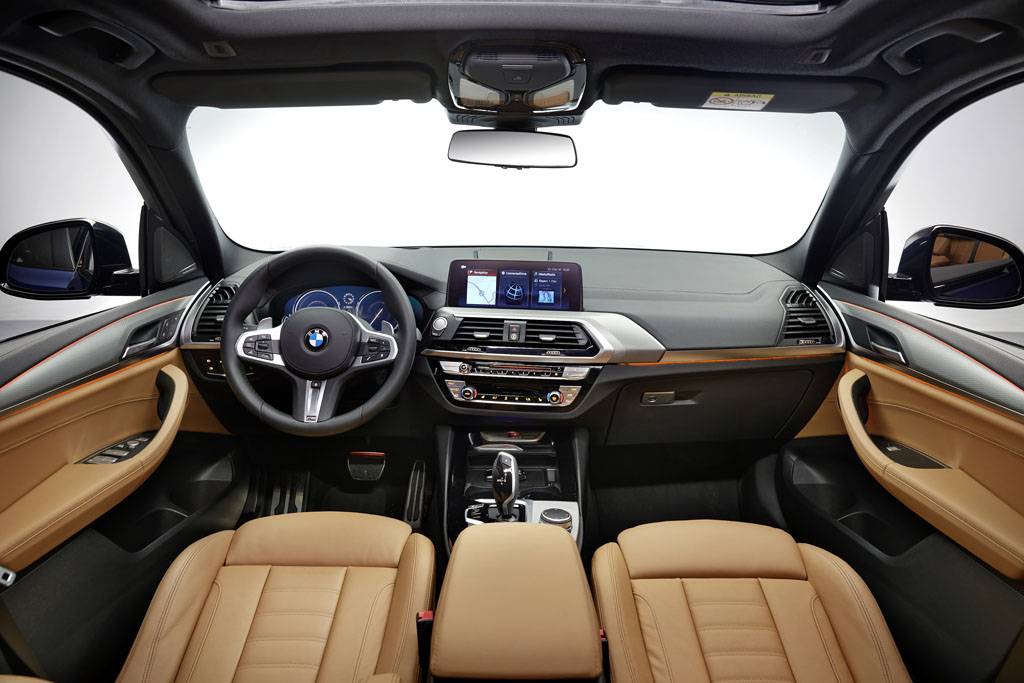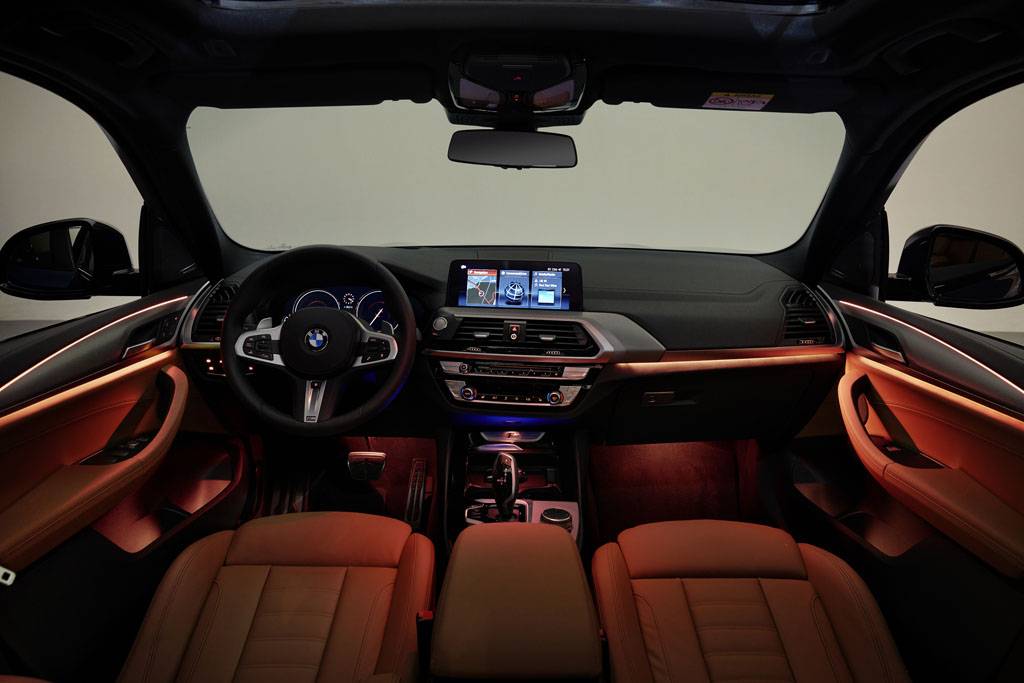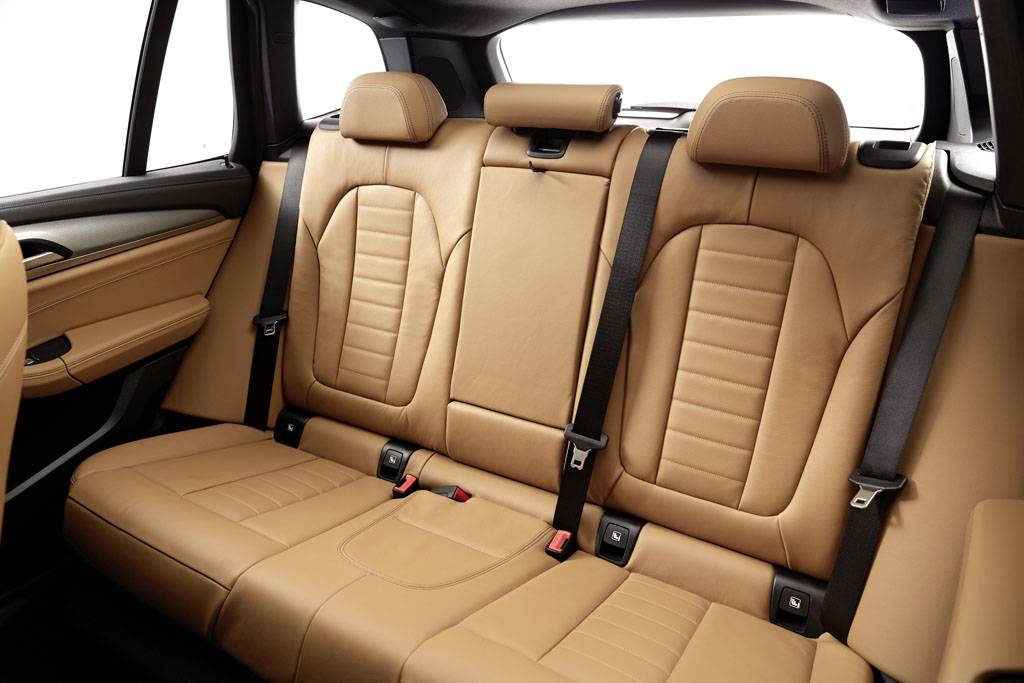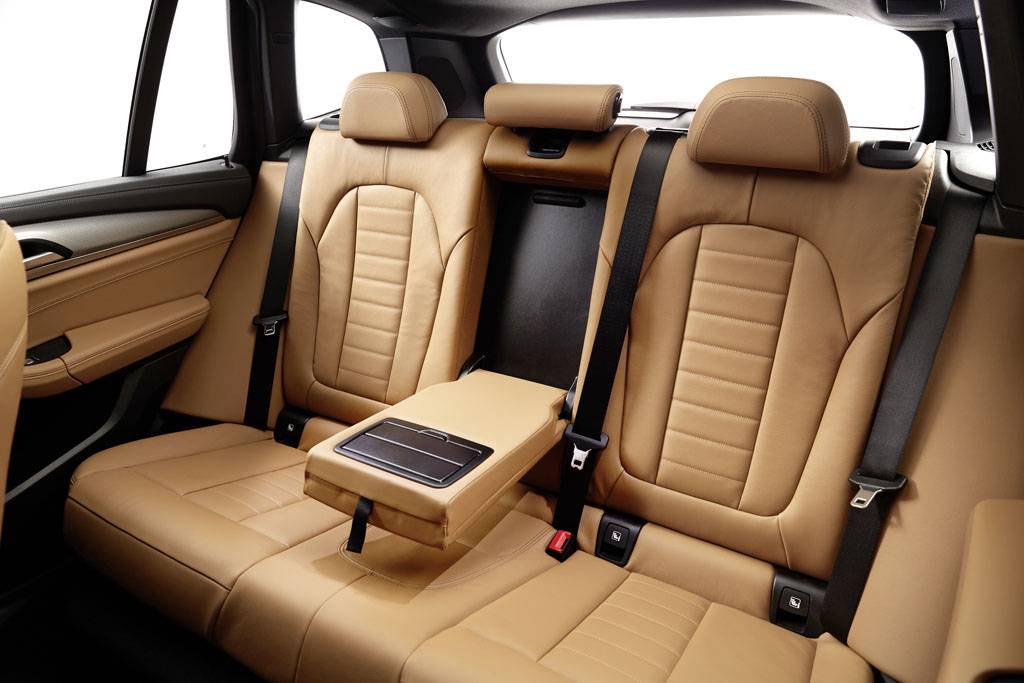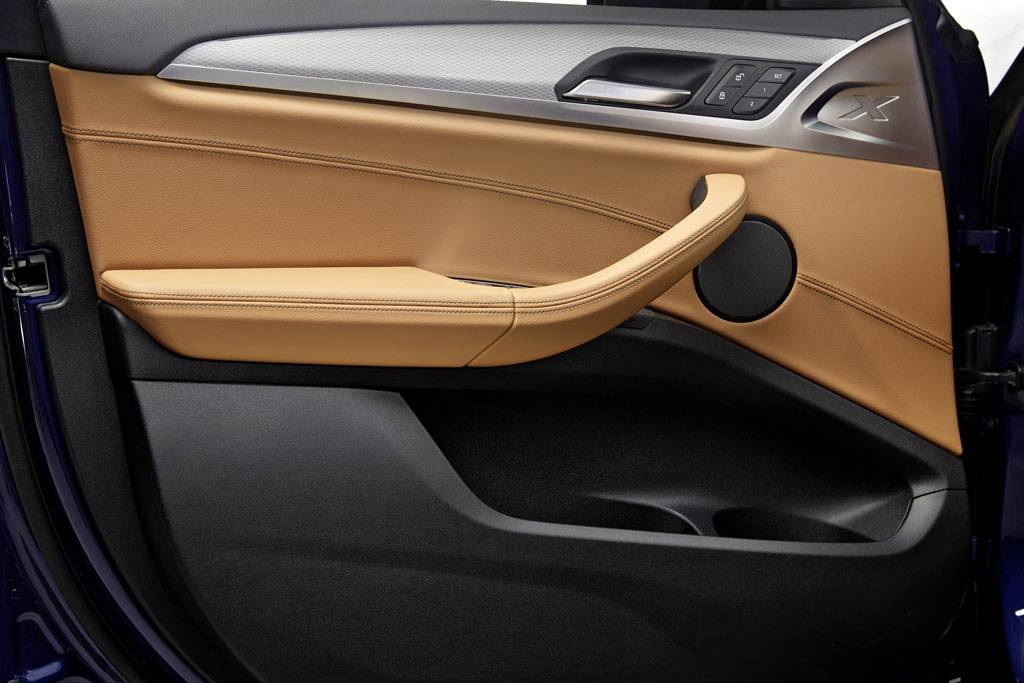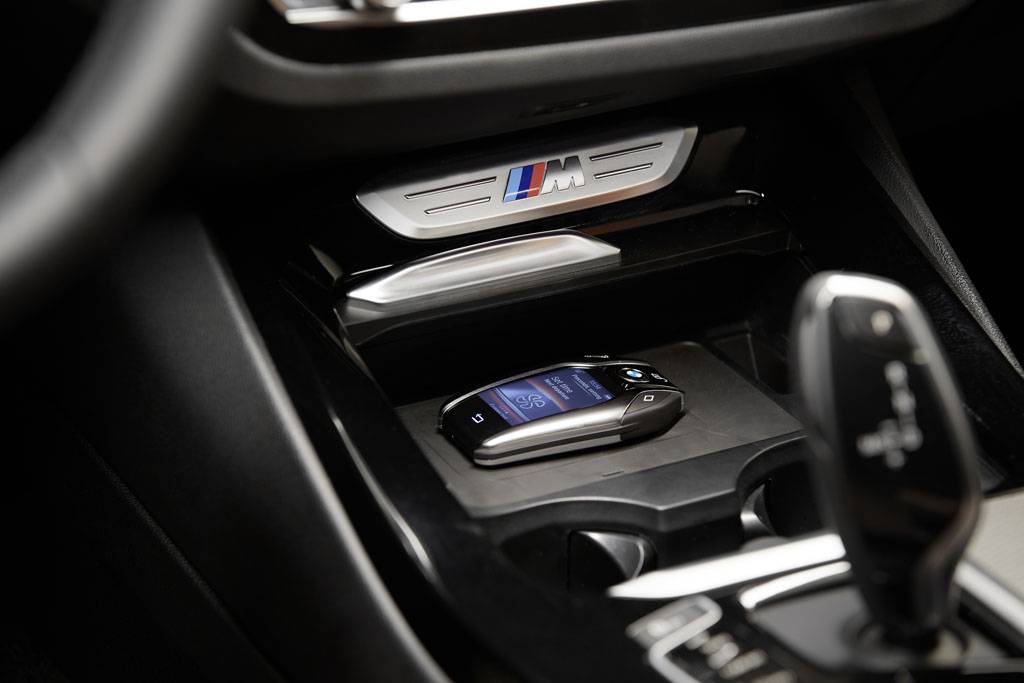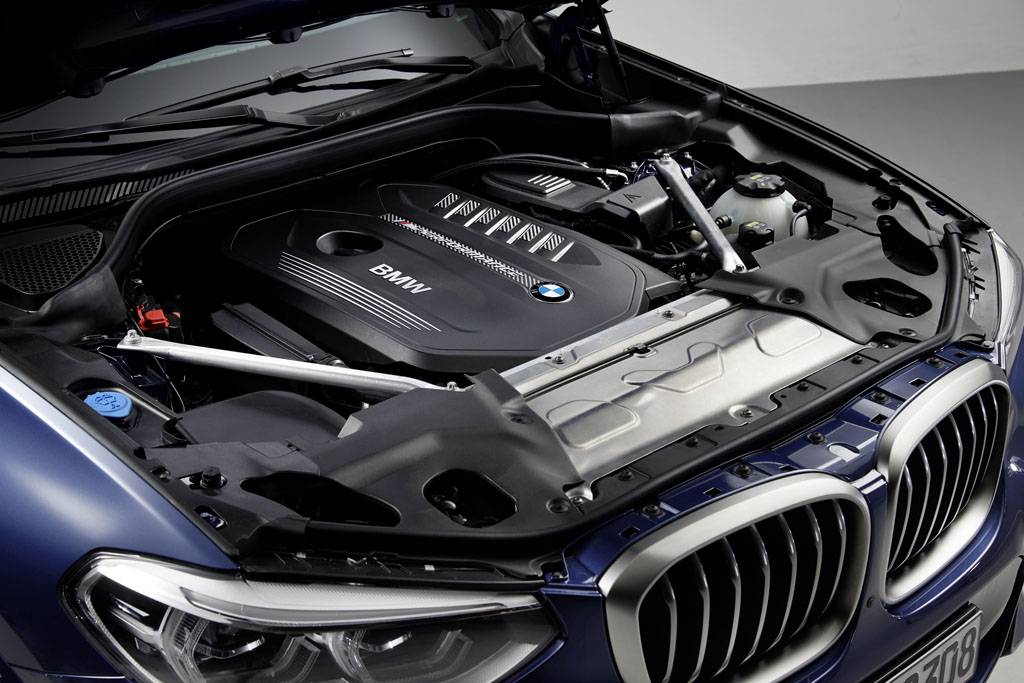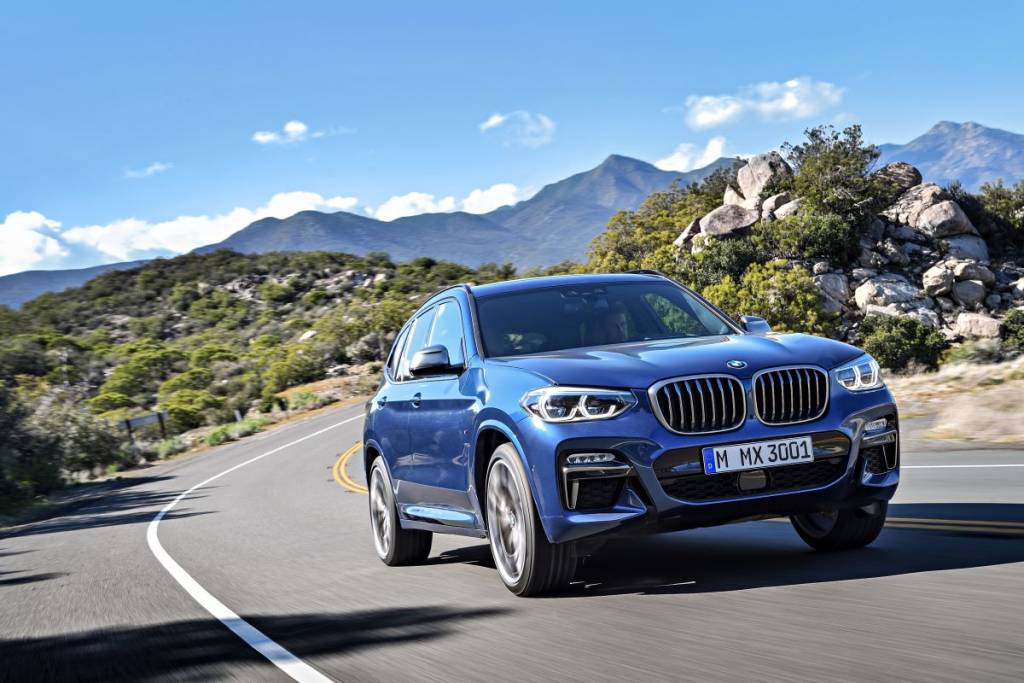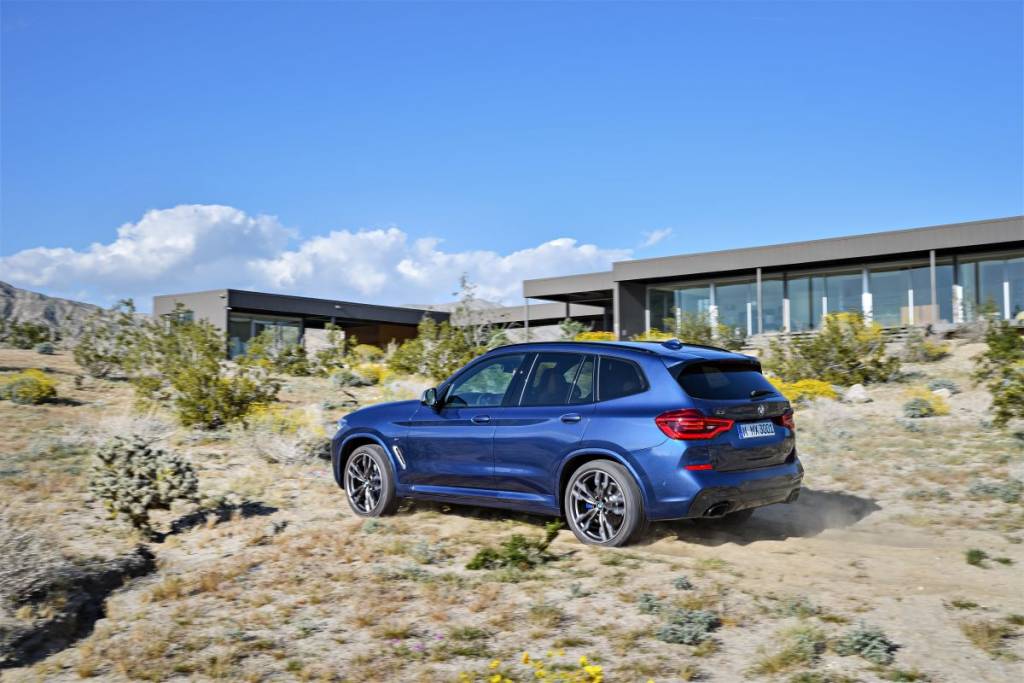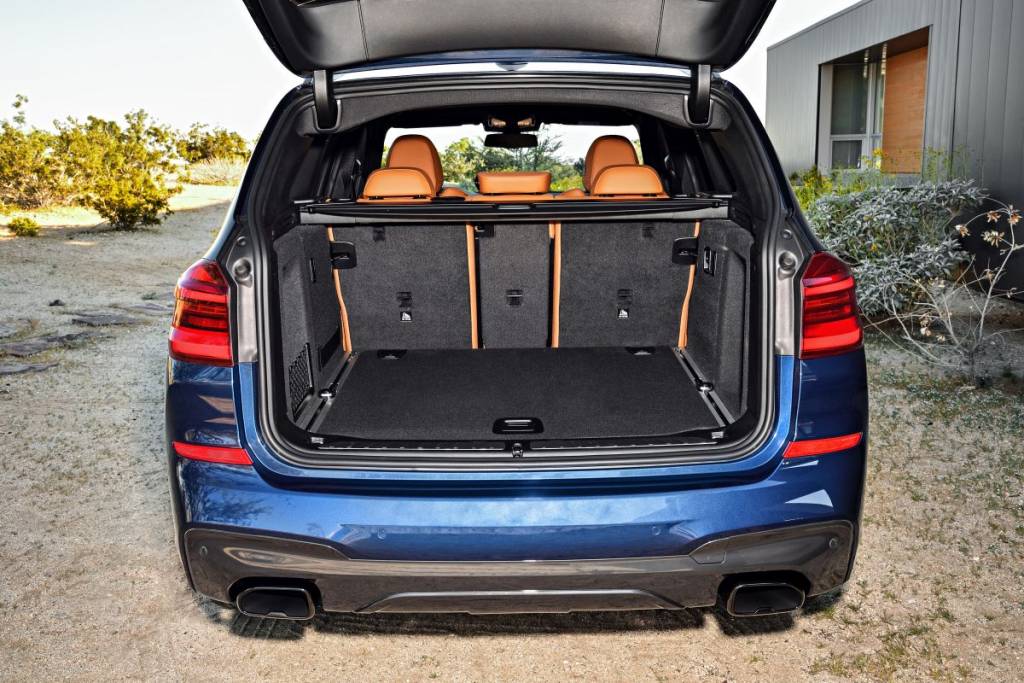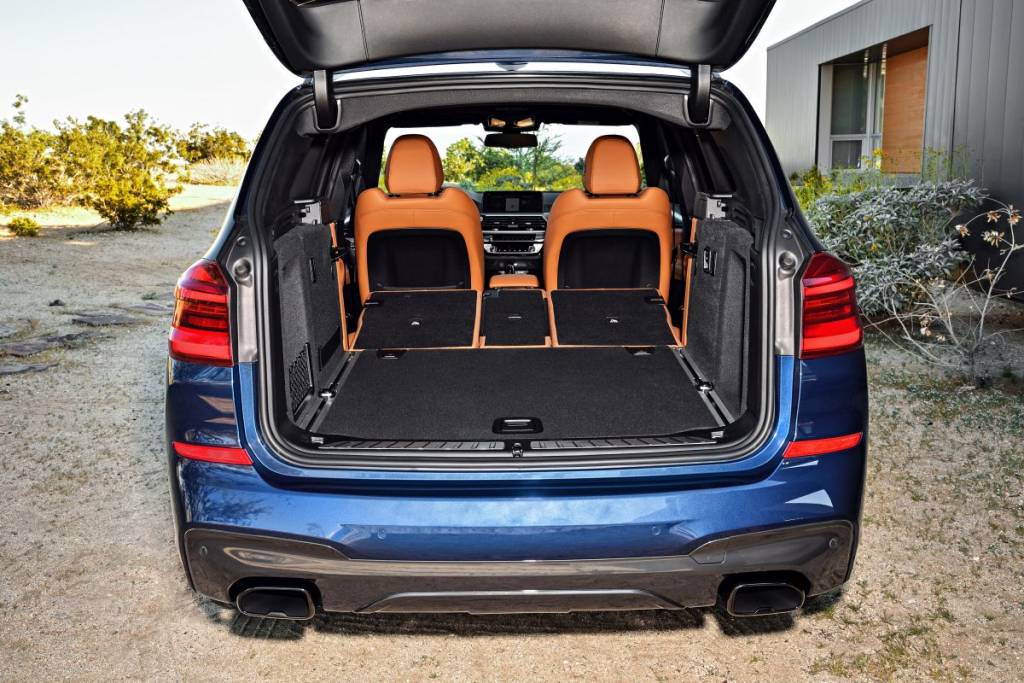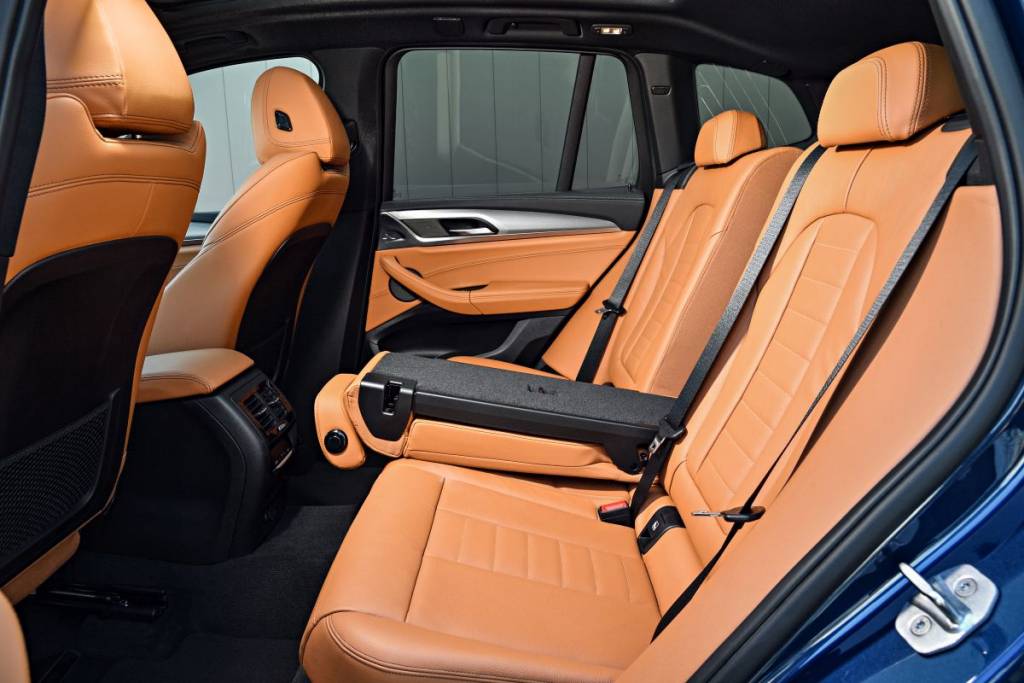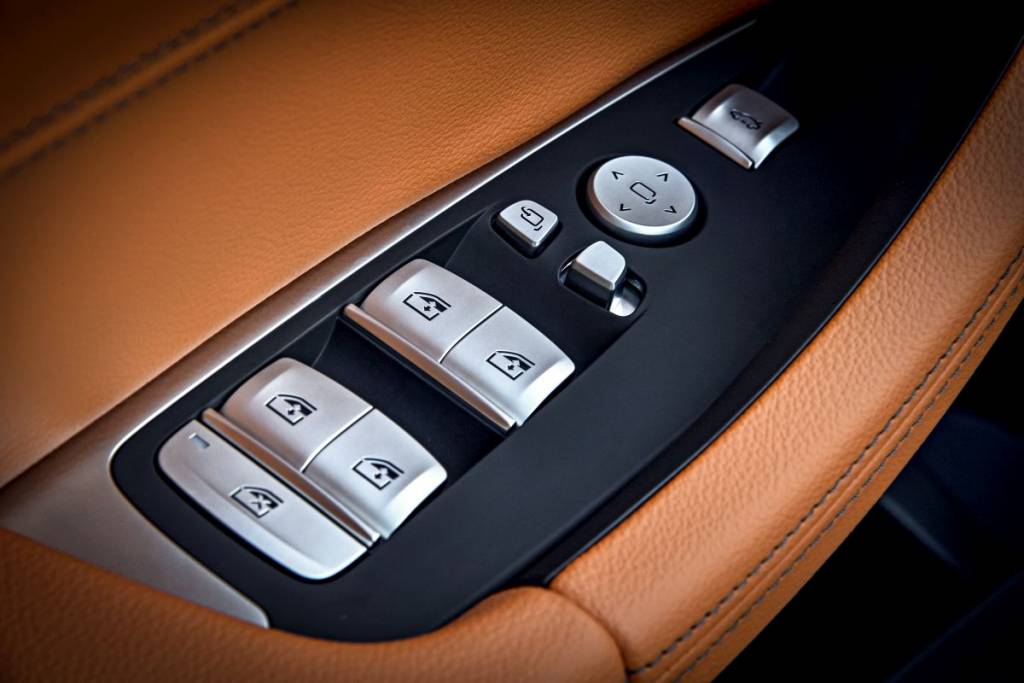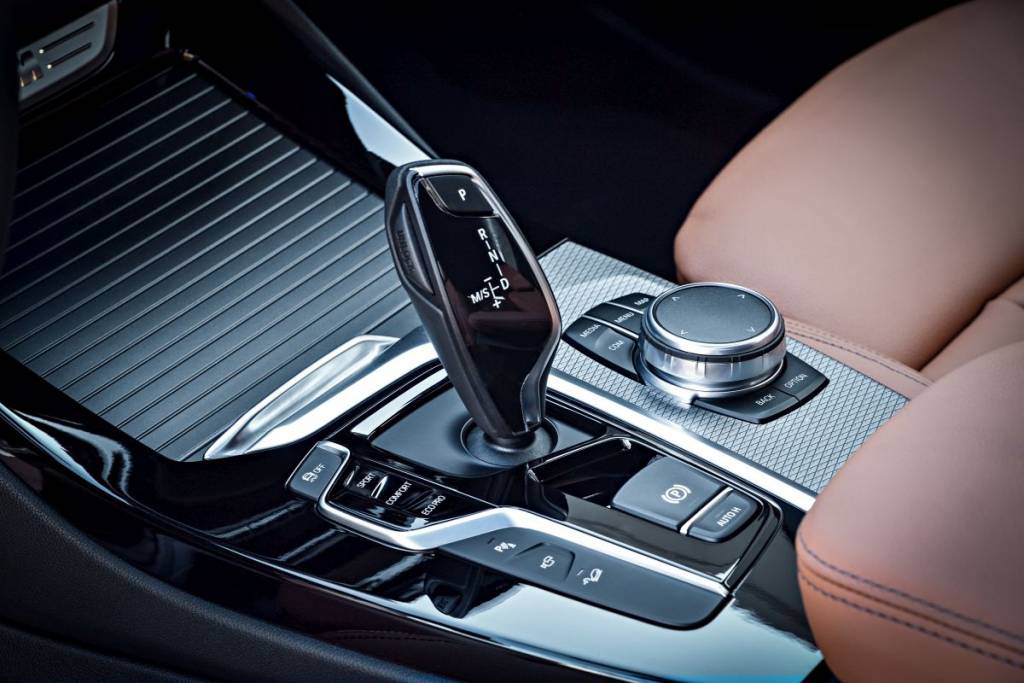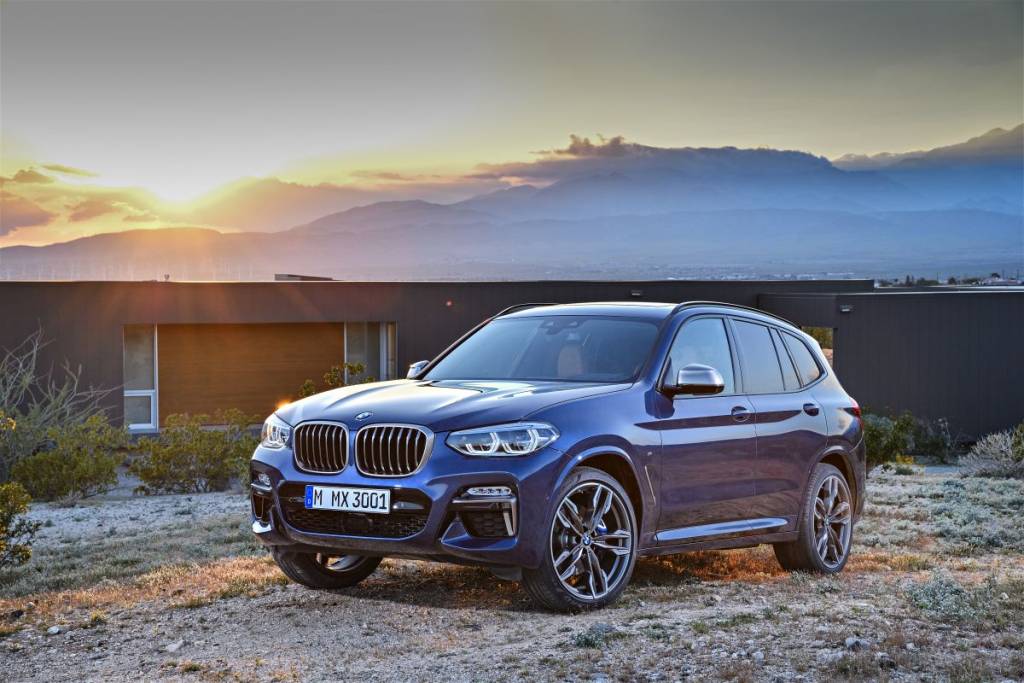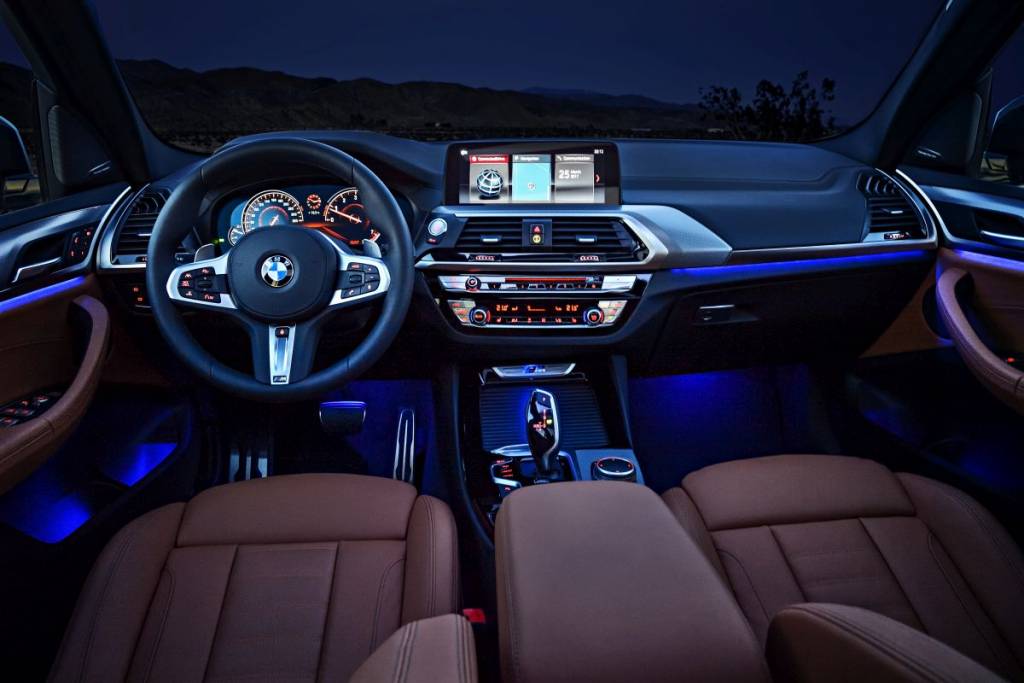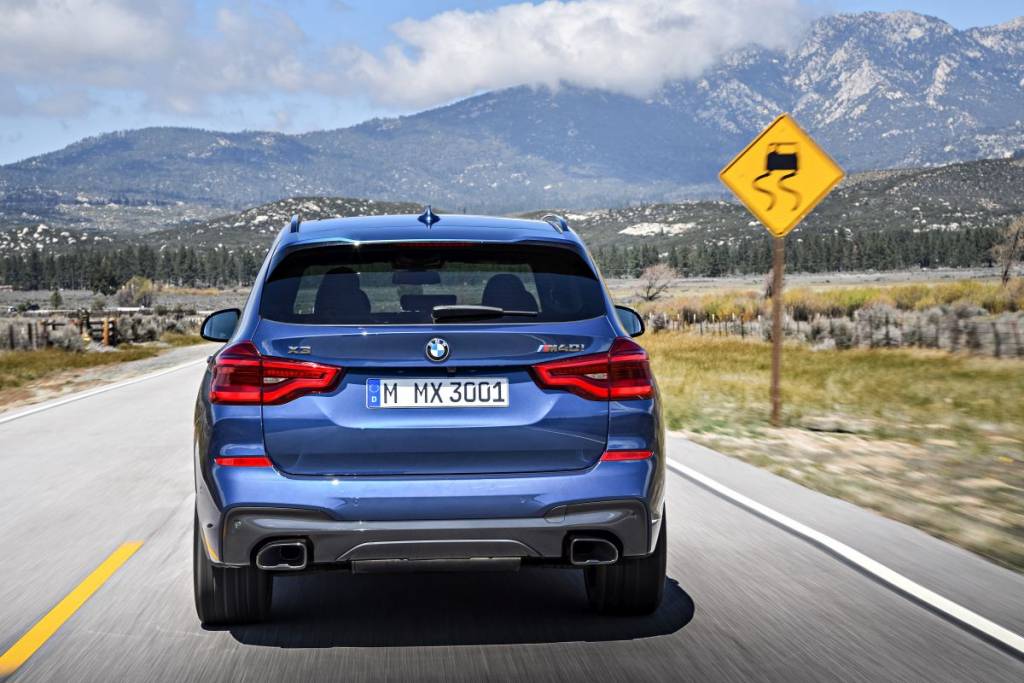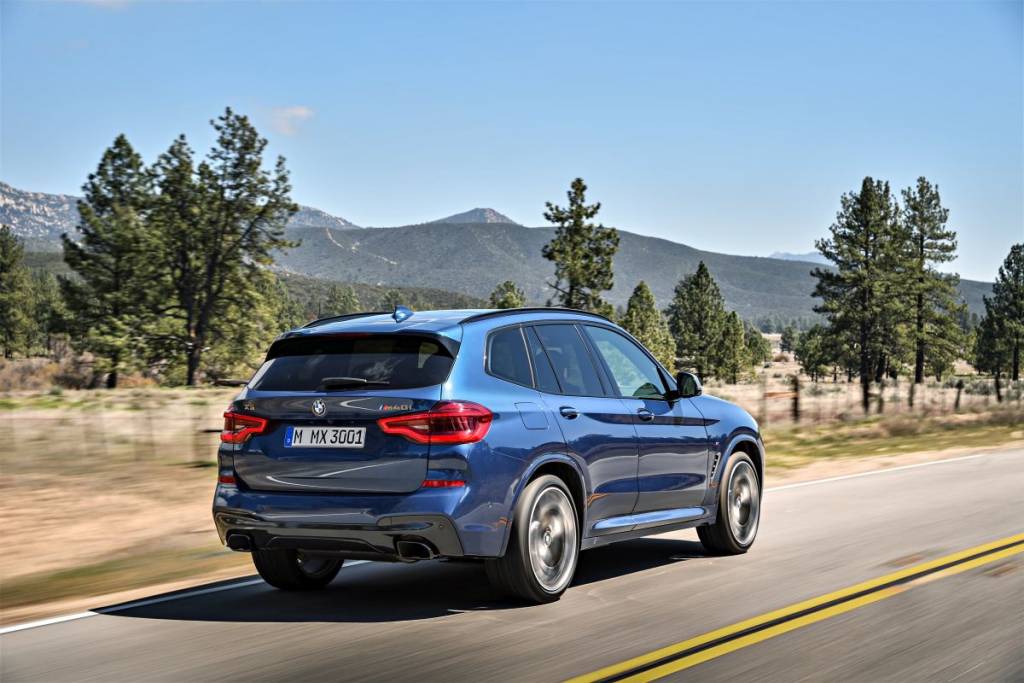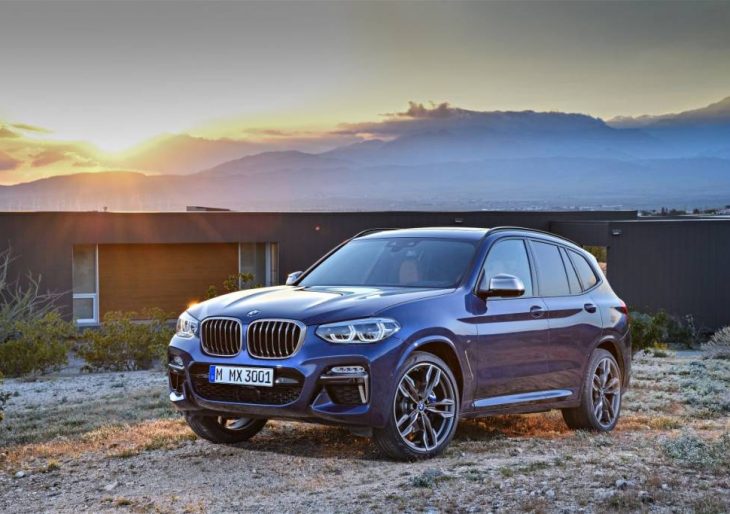BMW’s unveiling of the 2018 X3 this week reveals a compact SUV ready to do battle with the Macan: the new fascia alone is striking, with a new mesh grille, larger front vents, and a turning away from the antiquated look of round fog lights toward sleek, elongated hexagonal units. A longer wheelbase, rear spoiler, enhanced creases, and active grille shutters give the car an even more performance-oriented edge.
For a powerplant, the newest X3 gets a 2.0L twin-turbo 4-cylinder engine that can pump out 248 horsepower; an eight-speed automatic gearbox helps send it from 0-60 in six seconds, and gives it a top speed of 130 MPH. A high-performance M-influenced variation, the X3 M40i, will bring the numbers up considerably; the 3.0L 6-cylinder twin-turbo will produce 355 horsepower, and give that car a 0-60 time of 4.6s.
Interiors are also considered, with the exterior design language flowing into the cabin, giving it a nice sense of continuity that translates to an overall atmosphere of speed and comfort. Of course, tech is paramount, and the new X3 features partial self-driving assistance, a large, bright head-up display, a 10.25 touchscreen-controlled iDrive infotainment system, gesture-control technology, and the ability to connect with a driver’s Apple or Samsung watch.
The revised X3 joins the X1 and X5 as BMW’s plant in South Carolina gears up on its way to an X-dominated lineup by 2021, with 1,000 additional workers and $600 million to be invested during the period. An X7 model is expected to be introduced in the next year, ahead of a production start in 2018.
It is difficult to compete with a similar Porsche model in the same price range, with that brand’s image giving that SUV an edge in consumer perceptions and expectations before test drives are ever conducted, not to mention the Macan’s impressive ratings history. But BMW is positioning the newest version of the X3 to take the position of top luxury-performance SUV in class, with the rest of the X lineup following suit.
